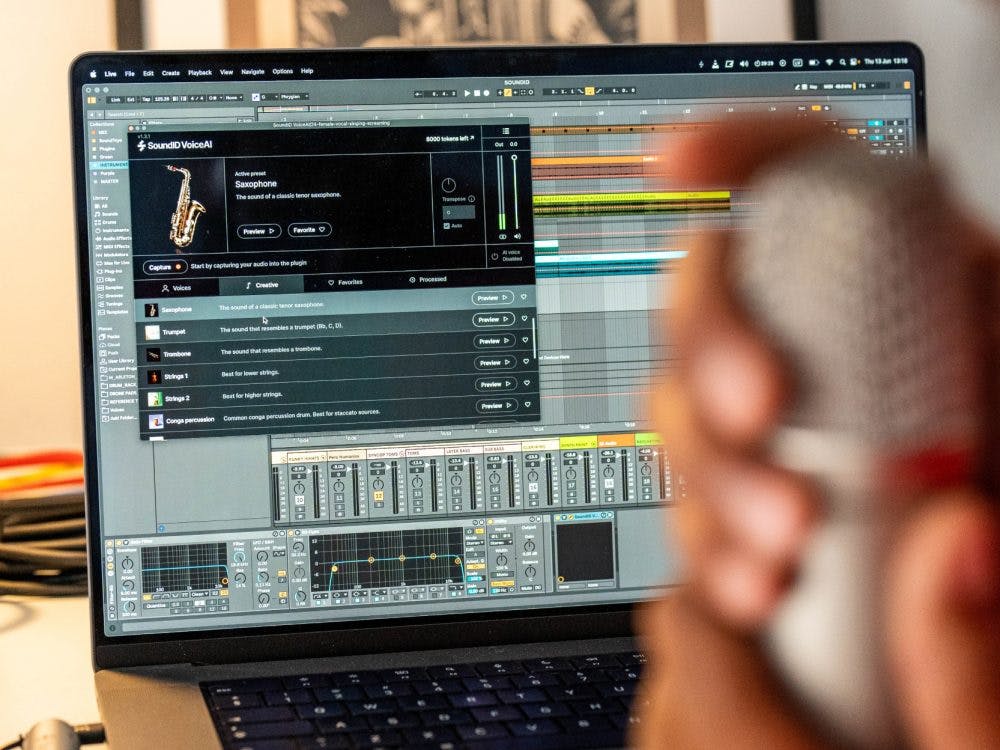Yes, AI can absolutely be a creative partner in the studio. Rather than replacing human creativity, AI creative partner tools work alongside musicians and producers to enhance the creative process, offering suggestions, generating ideas, and handling technical tasks. This collaboration allows artists to explore new sonic territories whilst maintaining full creative control over their artistic vision.
What does it mean for AI to be a creative partner?
An AI creative partner functions as a collaborative tool that augments human creativity rather than replacing it. Unlike traditional automation that simply executes predetermined tasks, artificial intelligence music production tools actively participate in the creative process by generating ideas, offering suggestions, and responding to your artistic input.
This partnership differs fundamentally from conventional studio automation. Where traditional tools might automate repetitive tasks like gain staging or EQ matching, creative AI music systems understand musical context and contribute original ideas. They analyse your existing work, learn your preferences, and suggest complementary elements that enhance your artistic vision.
The key lies in maintaining human agency. You remain the creative director, making final decisions about which AI suggestions to accept, modify, or reject. This collaborative approach allows you to explore creative possibilities you might not have considered whilst ensuring the final output reflects your unique artistic voice.
How can AI actually help with music production?
AI in music studio environments offers practical assistance across multiple production stages. These tools excel at generating melodic ideas, suggesting harmonic progressions, and creating rhythmic patterns that complement your existing compositions.
For vocal production, AI audio technology can transform a single voice into multiple backing vocals or convert vocal performances into instrumental sounds. You can record one vocal line and use AI to create an entire choir, each with distinct timbral characteristics and natural timing variations.
Sound design benefits significantly from AI assistance. These tools can morph between different sonic textures, suggest complementary sounds for your arrangements, and even transform simple humming into orchestral instruments. During mixing, AI can analyse your tracks and suggest processing chains, though you maintain control over the final sound.
AI also excels at arrangement suggestions, identifying where additional elements might enhance your composition and proposing structural changes that improve song flow.
What are the different types of AI tools available for musicians?
Studio AI tools fall into several distinct categories, each serving different aspects of music creation. Composition assistants help generate melodies, chord progressions, and song structures based on your input parameters and stylistic preferences.
Audio processing tools represent another significant category. These include AI-powered vocal processors that can clone voices, create harmonies, or transform vocal performances into entirely different timbres. Some tools specialise in converting audio between different formats, such as transforming vocal melodies into instrumental parts.
Mastering and mixing AI software analyses your tracks and suggests or applies processing to achieve professional-sounding results. These tools understand frequency balance, dynamics, and spatial positioning to enhance your mixes.
Creative inspiration generators form another category, offering random musical ideas, suggesting genre-blending approaches, or providing starting points when you’re experiencing creative blocks. These tools often combine multiple AI technologies to offer comprehensive creative support.
How do you start working with AI in your studio workflow?
Begin by identifying specific areas where music production AI could enhance your current process. Start with one tool rather than overwhelming yourself with multiple AI systems simultaneously.
Choose software that integrates seamlessly with your existing DAW. Most AI music software operates as plugins, allowing you to incorporate them into familiar workflows without major disruptions. Look for tools that offer both local processing for privacy and cloud processing for more complex operations.
Start with simple applications like generating backing vocals or creating demo versions of your ideas. Record dry, unprocessed vocals for best results, as AI tools work most effectively with clean input signals. Avoid heavily processed or reverb-laden source material initially.
Experiment with different presets and settings to understand each tool’s capabilities. Many AI systems learn from your preferences over time, so consistent use improves their suggestions and output quality.
Gradually expand your AI toolkit as you become comfortable with each tool’s strengths and limitations.
What should you expect when collaborating with AI?
Realistic expectations are important when working with AI music collaboration tools. These systems excel at generating ideas and handling specific technical tasks, but they don’t replace musical knowledge, artistic vision, or creative decision-making.
AI suggestions won’t always align with your artistic intent. You’ll need to evaluate each suggestion critically, understanding that AI tools work best when you provide clear direction and quality input material. The output quality directly correlates with input quality and your ability to guide the AI effectively.
Processing times vary depending on whether you use local or cloud-based processing. Local processing offers privacy and unlimited use but requires adequate computer resources. Cloud processing typically delivers faster results for complex operations but requires internet connectivity.
Remember that AI tools are creative catalysts, not creative replacements. They help overcome creative blocks, suggest new directions, and handle time-consuming tasks, but your artistic judgement remains the most important element in the creative process.
The most successful AI collaborations occur when you maintain creative control whilst remaining open to unexpected suggestions that push your music in new directions.
AI creative partnership in the studio represents a significant evolution in music production, offering unprecedented opportunities for creative exploration and efficiency. These tools work best when viewed as sophisticated creative assistants that enhance rather than replace human artistry. As AI technology continues advancing, we’re developing even more innovative solutions to support your creative journey in the studio.
If you’re ready to get started, check out VoiceAI today.



